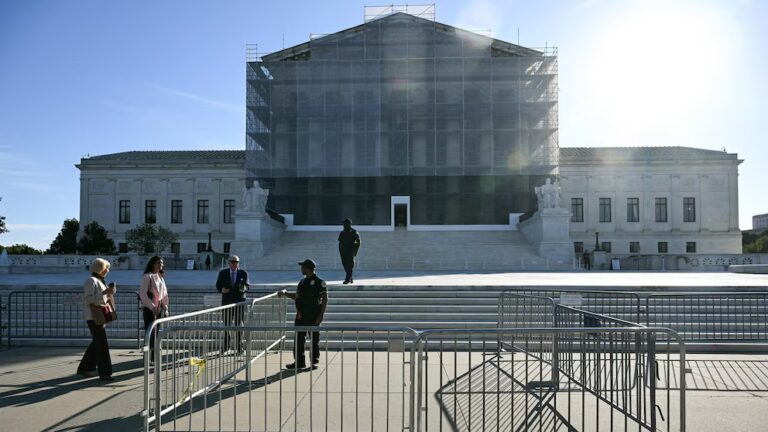
Madeleine Ngo covers economic policy for Vox. She previously worked at the New York Times, the Wall Street Journal, Bloomberg, and the Philadelphia Inquirer.
The economy is confusing right now. Many economists are predicting the United States will slip into a recession in the next year. Inflation remains stubbornly high, and the Federal Reserve continues to aggressively raise interest rates. But the labor market has held up: Employers are struggling to fill open positions and the unemployment rate remains low.
A jobs report released on Friday showed that, despite the dim outlook, the labor market is still churning along and has remained a bright spot in the economy.
Employers added 223,000 jobs to the economy in December, according to the Bureau of Labor Statistics report. That’s a slowdown from the month before, when employers added 256,000 jobs, but slightly more than economists were expecting.
It typically takes months for the effects of the Fed’s rate hikes to fully show in economic data. By making borrowing money more expensive, the Fed is trying to slow demand and get consumers to spend less. That should help ease inflation over time, but that could also result in businesses ramping down hiring or laying off workers.
So far — despite the fears and predictions of an economic downturn — labor market data doesn’t suggest the United States is on the brink of a recession. Here’s a guide to a few key numbers economists are watching closely.
1) Job growth
Although job growth has been slowing and November’s gains were revised downward, employers have still been adding a robust number of jobs to the economy each month (in 2021, job gains were stronger since the economy had more to recover after unemployment surged earlier during the pandemic). It would start to become troubling if the economy began to see several months of sustained job losses, economists say.
Because job openings are still high and there aren’t enough workers to fill them, Fed officials have said they believe job growth has room to pull back without the country seeing a huge spike in unemployment. Employers could leave positions unfilled, for instance, rather than lay off workers. The Fed is purposely trying to weaken the labor market, in part to ease pressure on wage growth, which should help tamp down inflation.
Mark Zandi, the chief economist at Moody’s Analytics, said the Fed would likely be “pretty happy with” monthly job gains decelerating to any number between 100,000 and zero.
“At that rate of job growth, you’d see unemployment slowly moving higher, but not fast enough to precipitate a loss of faith in the economy and a pullback by consumers,” Zandi said.
Aaron Terrazas, the chief economist at Glassdoor, said several months of net job losses would be a troubling sign of pain ahead for workers. He noted, though, that the economy was still a “pretty long way” from a recession because of the strength of the labor market, and it was possible that the United States could avoid one.
“That is certainly something that you could get worried about,” Terrazas said.
2) The unemployment rate
Many economists cite the “Sahm rule,” which measures whether the unemployment rate has increased sharply, as a benchmark for whether the economy has tipped into recession. According to the rule, created by former Fed economist Claudia Sahm, a recession is triggered once the three-month average of the unemployment rate rises half a percentage point above its low over the past 12 months.
That hasn’t happened. The unemployment rate has remained low and fell to 3.5 percent in December, according to Friday’s report. That’s down from 3.6 percent the month before and a half-century low.
Still, a higher unemployment rate could be driven up by different factors, such as more workers coming off the sidelines and starting to search for jobs. Nick Bunker, the economic research director for North America at the Indeed Hiring Lab, said underlying data would help determine how and why the unemployment rate was increasing. For instance, it would be important to examine data on the number of workers who go from being unemployed to having a job within the next month, which can be used to calculate the rate at which unemployed workers are finding jobs, he said.
“If that number keeps trending down and gets lower, that would be a sign that unemployed workers are having a hard time finding work, which is a negative sign for the labor market,” Bunker said.
3) Unemployment claims
Unemployment claims can be one of the first harbingers of a recession. Economists monitor the claims as a proxy for layoffs, since the data is released weekly and is more timely than other monthly government reports.
Unemployment claims have typically averaged around 250,000 a week in a more normal economy with a well-balanced labor market, Zandi at Moody’s Analytics said. If jobless claims rose closer to around 300,000 per week, that would be consistent with a recession, he said.
Unemployment claims fell to 204,000 in the week ending December 31, down 19,000 from the week before, according to Labor Department data. Jobless claims stayed low in 2022 compared to historical levels, underscoring the tightness of the labor market: The number of claims last year peaked at 261,000 in the week ending July 16.
4) Layoffs, job openings, and the quits rate
Data on layoffs, job openings, and how many workers are quitting their jobs also help economists learn more about the strength of the labor market and are released in a monthly BLS report.
Layoffs remained low at 1.4 million in November (in comparison, layoffs were nearly 2 million in February 2020, before the pandemic spike). The number of people quitting their jobs also remains higher than normal. In November, 4.2 million people quit their jobs and the quits rate stood at 2.7 percent, according to the most recent report. Job openings remain high at 10.5 million in the same month.
Bunker at Indeed said the quits rate was an important indicator to watch because it underscored how confident workers were in their ability to leave their current job and find a new one. Quitting in the private sector is still about 16 percent higher than the 2019 average, Bunker said.
“It’s hard to see an imminent recession if people are still voluntarily leaving their old jobs at high rates,” Bunker said.
Month-to-month data can bounce around, though, and Bunker said he would want to see changes over several months before he became more concerned about a recession.
“You’re going to need to see a long period of time of gradual deterioration or a big sharp reversal for any of the indicators in the labor market to trip the alarm bell,” Bunker said.
Sourse: vox.com





